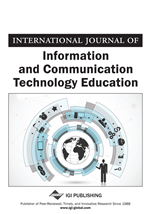Search
Purpose: The purpose of this study is to explore employees’ knowledge- and learning-related experiences in moving between local firms and multinational enterprises (MNEs) and to examine the nature of paradoxes of labor...
Exploratory experiments on effects from a phase transition are reported for a low-melting microcrystalline anthraquinone (N,N,N′,N′-tetraoctyl-2,6-diamino-9,10-anthraquinone or TODAQ). Data for the solid-liquid phase...
Exploratory experiments on effects from a phase transition are reported for a low-melting microcrystalline anthraquinone (N,N,N′,N′-tetraoctyl-2,6-diamino-9,10-anthraquinone or TODAQ). Data for the solid-liquid phase...
Purpose: The human element, especially its multilevel manifestation, has been overlooked in research investigating the antecedents of firm supply chain agility (FSCA). The purpose of this paper is to explore how a firm’s...
|
|< |
< |
1 |


